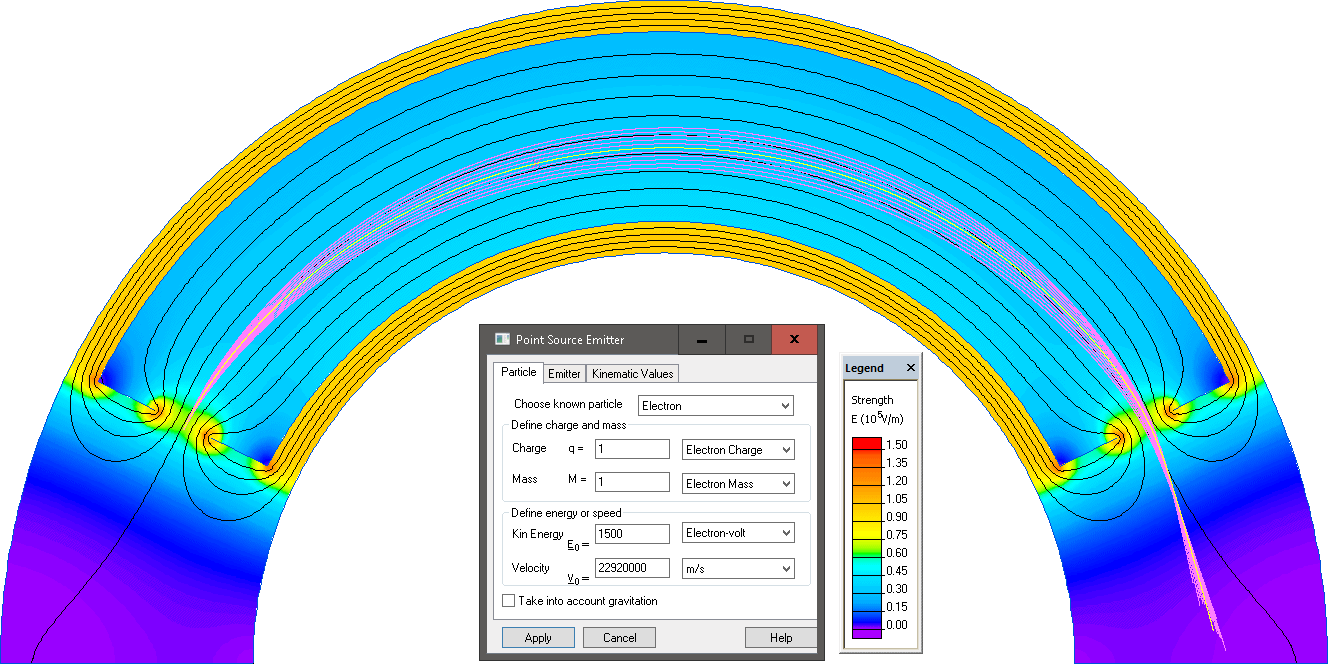Cylindrical deflector analyzer
QuickField simulation example
This is an example of the cylindrical deflector analyzer simulation, performed with QuickField software.
Problem Type
Plane-parallel problem of electrostatics.
Geometry
Cylindrical deflector analyzer (CDA) is a part of a cylindrical capacitor with angular sector of 127°17'. CDA has two slits made for the particles to enter and exit the CDA field.
In this example the beam of electrons enters the CDA perpendicular to the cylinder's radius with initial kinetic energy E0 = 1500 eV and angle dispersion of 6°
Given
Radius of external cylinder R2 = 0.1 m
Radius of internal cylinder R1 = 0.07 m
CDA voltage U = 1000 V
Initial kinetic energy of electrons E0 = 1500 eV
Relative permittivity of air ε = 1;
Task
Calculate the beam focus point coordinates.
Solution
At the beginning we solve the electrostatic problem calculating the CDA field. After that we open the Point Source Emitter dialog using the Particle Trajectory command (View menu). Using the Emitter dialog page we position the point particle emitter at the center of the CDA's entrance slit (x = -0.076 m, y = 0.037 m) and specify the range for the starting angles between 62 and 68 degrees. Using the Particle dialog page we choose the desired particle type - electron - from the list, and define the value of initial kinetic energy E0=1500 eV. To obtain the result, we click Apply and view the particle trajectories on screen.
Results
The beam focus point: (0.081, 0.027). The focusing angle (approx.): 127° + 8.5° = 135.5°.

Theory says that with some value of CDA voltage depending on the energy of electrons, the beam will be focused at the exit slit. In ideal case the voltage for our example would be U = 1070 V. The focusing angle and the CDA voltage in our example are slightly different because of the CDA fringing effects.
- Video: Cylindrical deflector analyzer
- View simulation report in PDF
- Download simulation files (files may be viewed using any QuickField Edition).